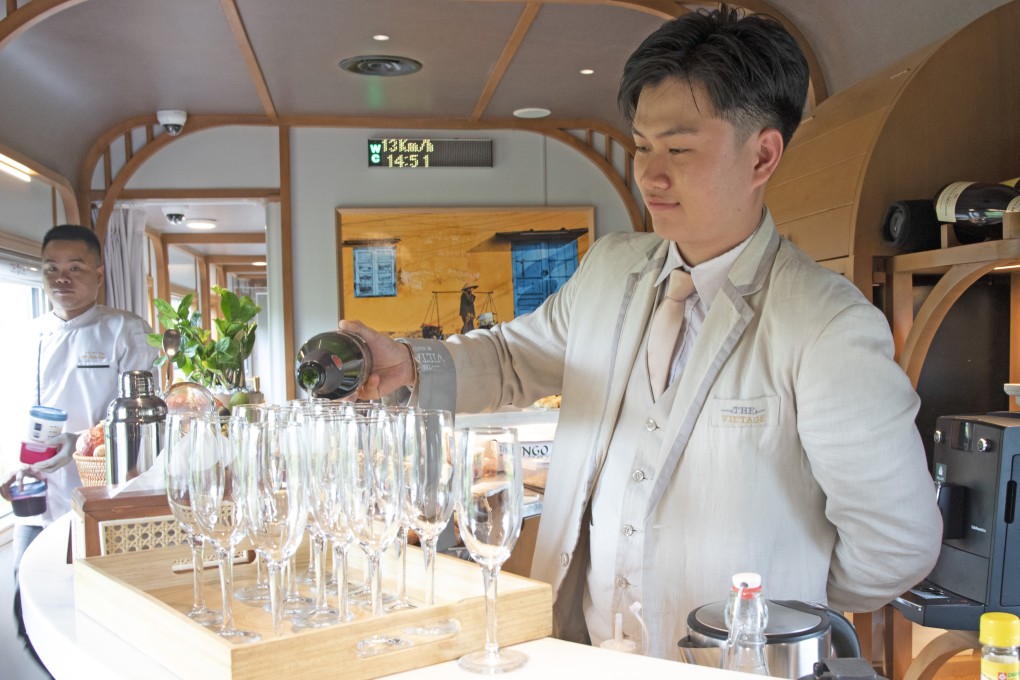Champagne, cocktails, caviar and snacks on a Vietnamese train ride: it’s low-carbon luxury
- Hitched to regular trains, and with free-flow drinks and fine food, Anantara’s Vietage carriages offer a luxurious way to get from A to B

I have never sipped champagne in a railway station waiting room before – but today I am travelling on the inaugural Vietage by Anantara 2pm train service from Nha Trang to Quy Nhon, in south central Vietnam.
If you have ever dragged your suitcase down a long platform and peered into crowded compartments in the forlorn hope of spotting an empty seat, your heart will leap as you are welcomed aboard this luxury carriage.
After a short ceremony, staff usher railway dignitaries, passengers and press representatives to one of six stylish private booths, each seating two, with gleaming windows through which to watch the world go by.
I am handed another glass of champagne, there is a shrill blast of a whistle and our five-hour travel experience gets under way.
